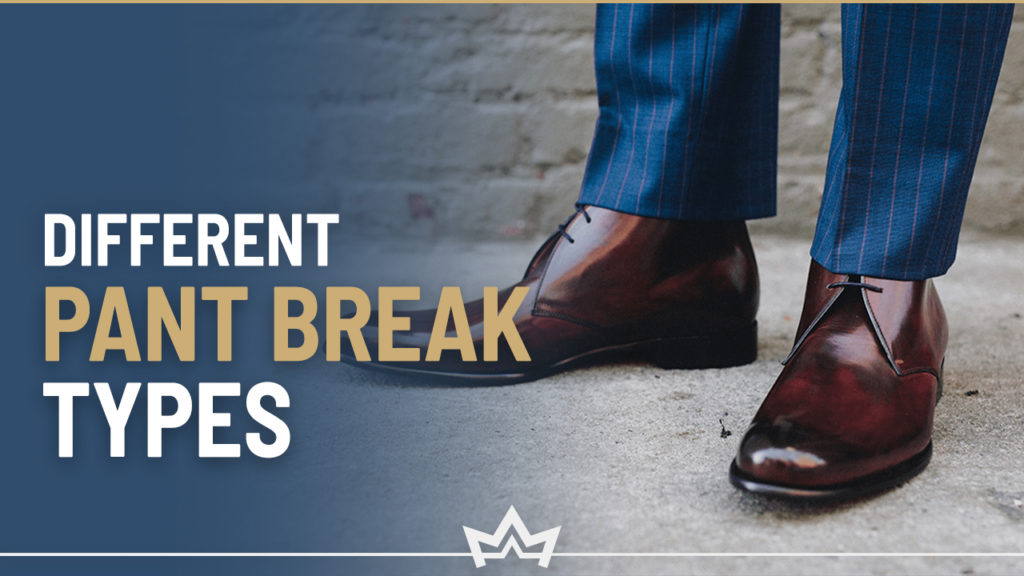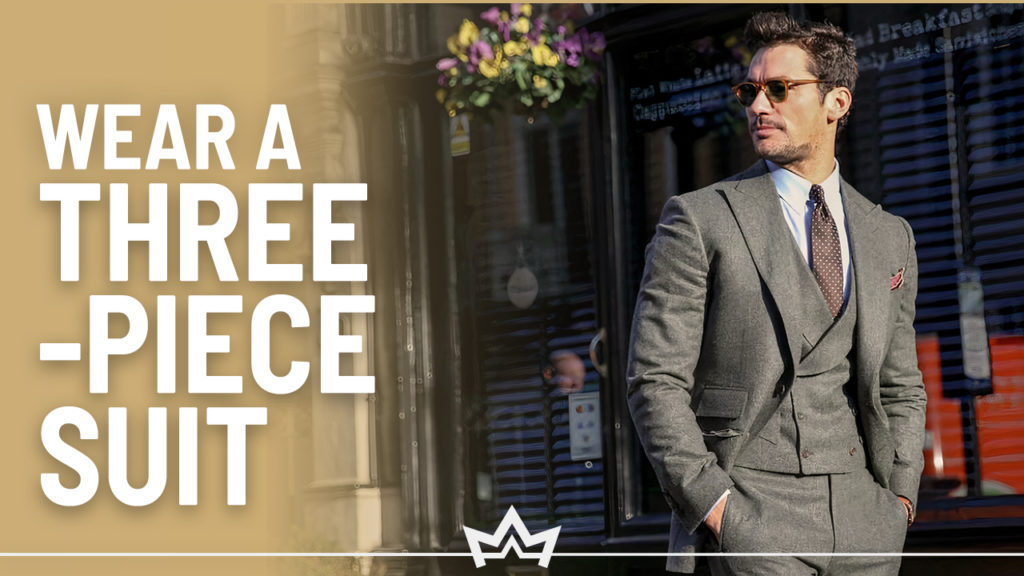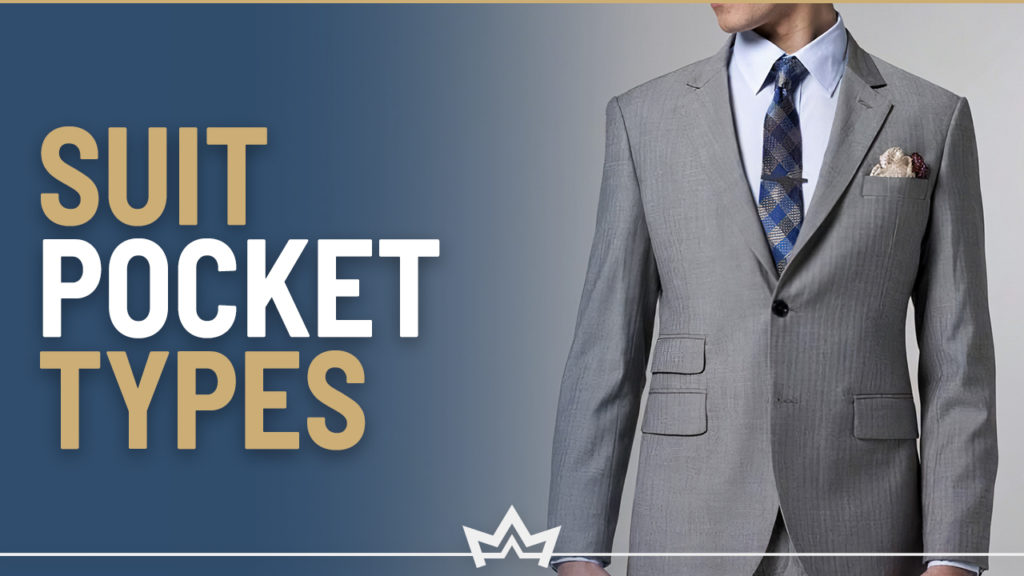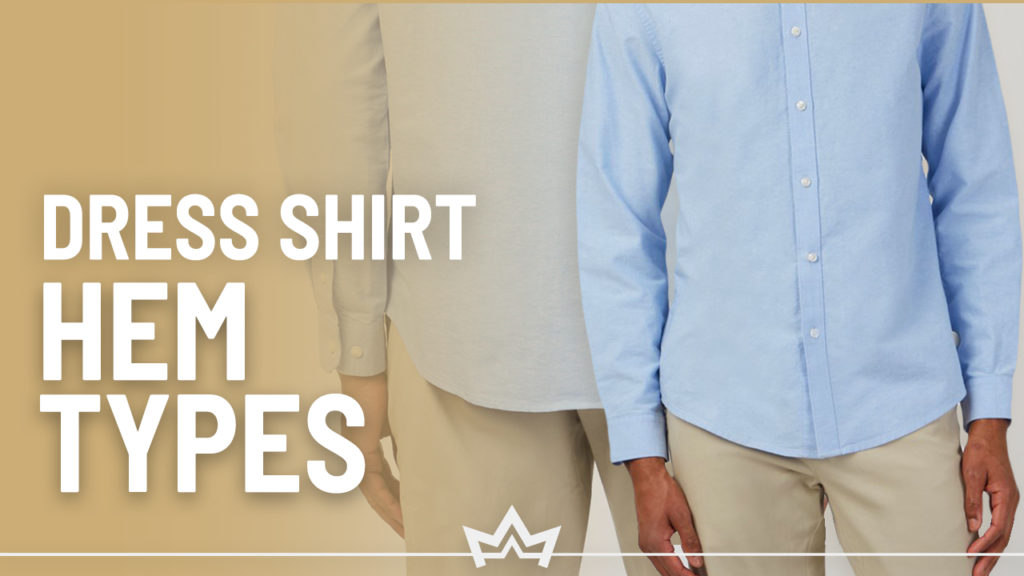Your pant break can say a lot about your attention to fashion.
If you manage to get your pant break just right, it shows people in the know that you are a very conscientious dresser and pay attention to even the most minor details.
The effect is subconscious, whether people even know what a pant break is.
On the other hand, if your pant break is inappropriate for your suit, it can throw off your look just enough to ruin your suit.
Here’s a brief overview to get your trouser break exactly right.
What is a Pant Break?
The suit pants break describes how the hem at the pant leg opening falls and creases on top of your shoes.
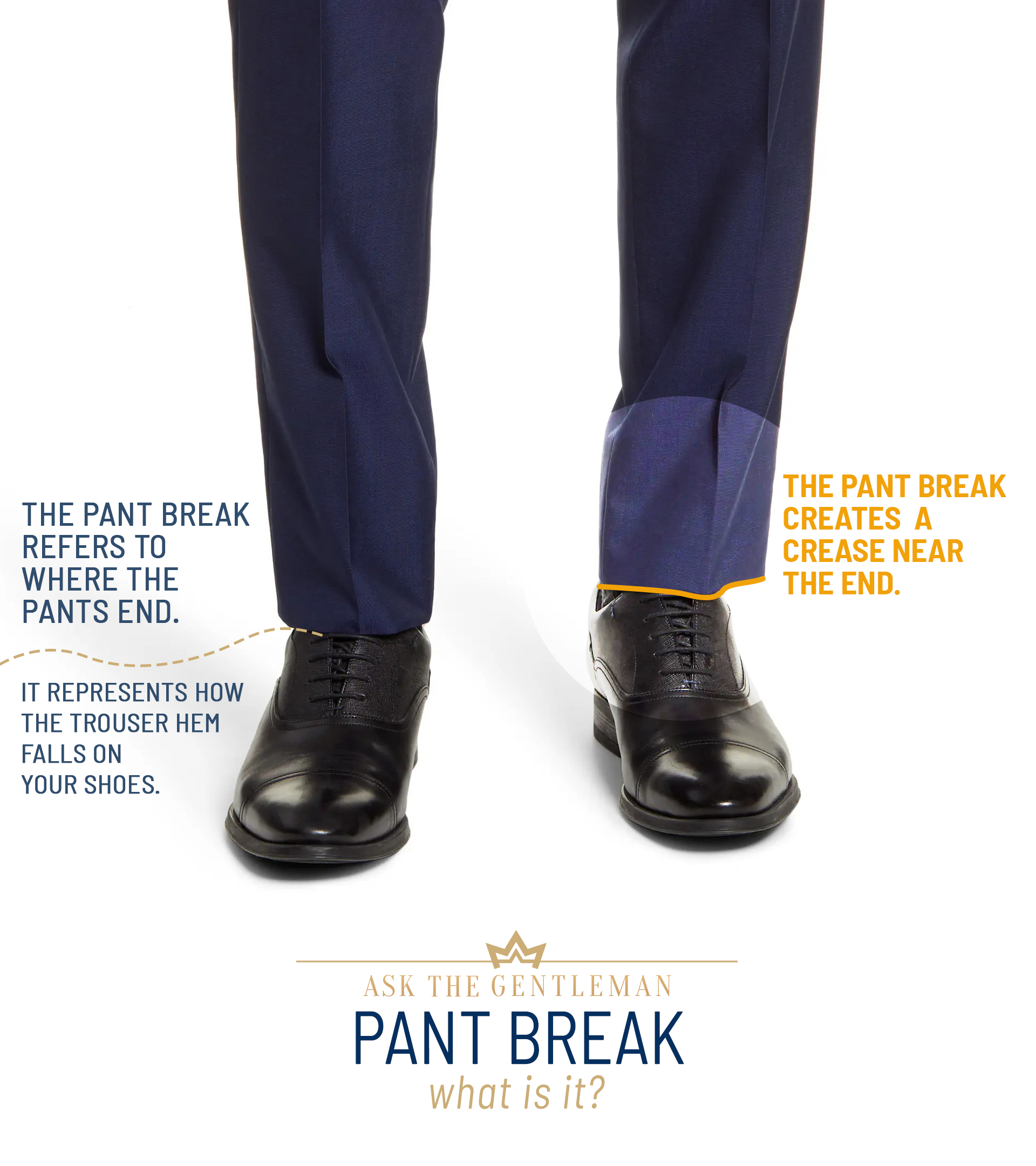
It refers to where the pants end and how much extra fabric they have.
A pant break will create a crease near the hem of your pants and make a small fold.
Essentially, the break determines the pant length. Any pair of trousers can have a break.
The break can range from a large crease at your ankle with a good bit of fabric resting on top of your shoe to no crease with no contact with your shoe.
The height of your dress shoe’s heel will matter, as it affects your height and how much break your pants have.
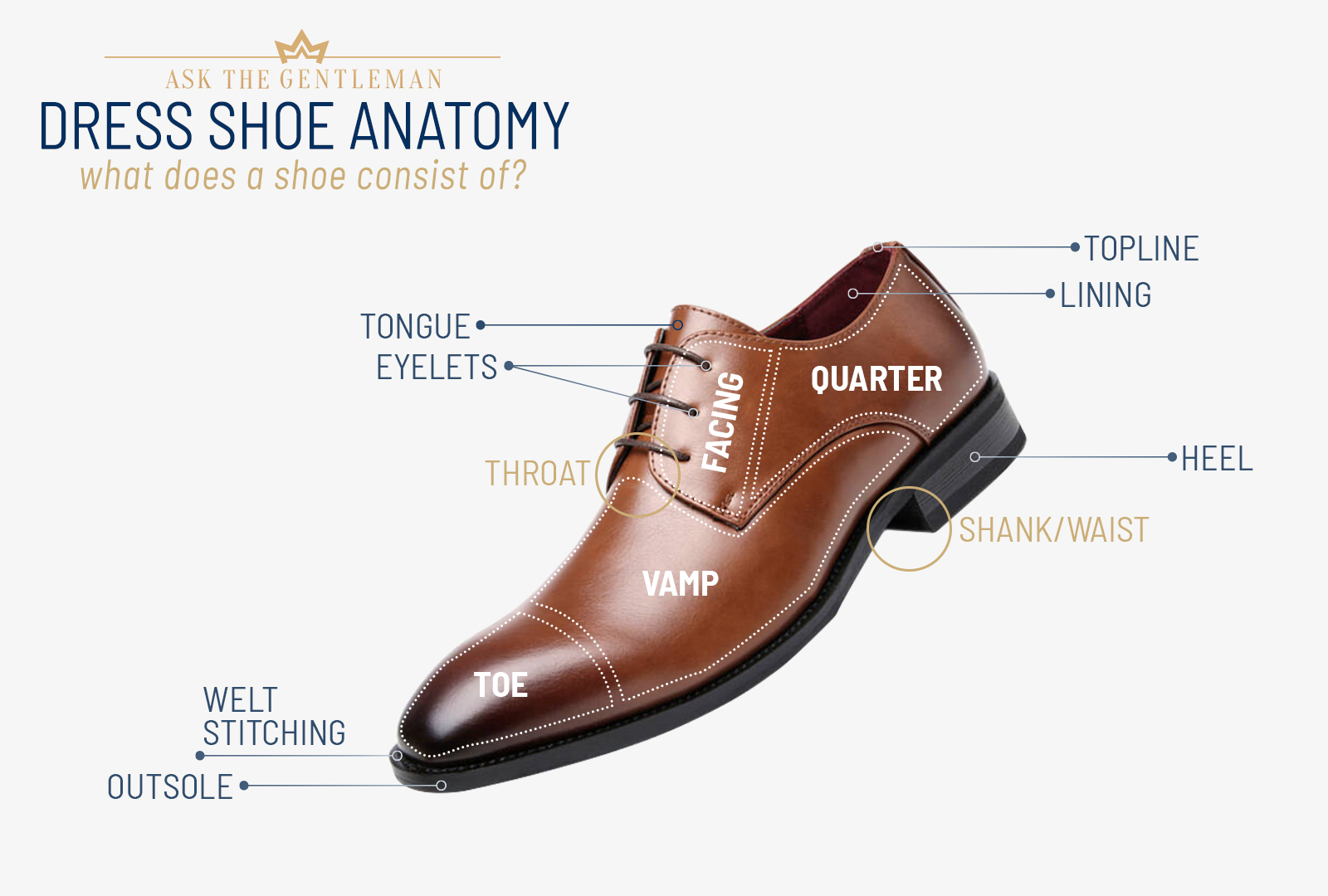
Generally, your pant break is a matter of personal preference. However, some styles flatter people, and pant cuts best.
Full Break Pants
Longer pants will create the largest trouser break.
The long length results in more fabric gathered at your ankle, forming the deepest crease possible.
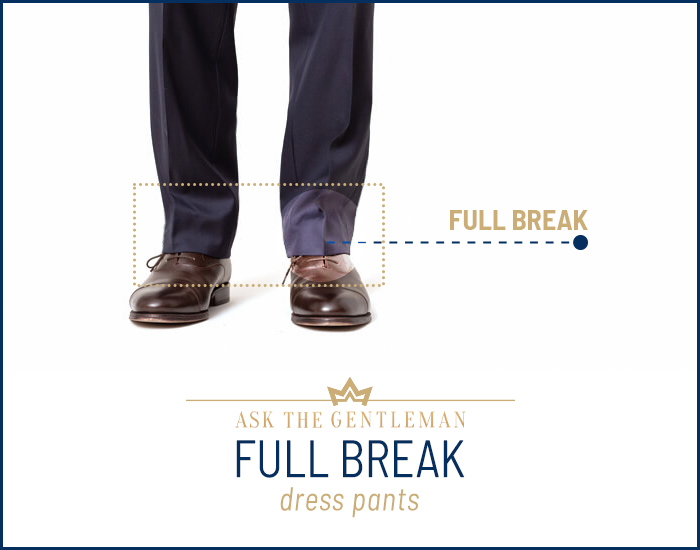
A full break works best with a straight pant leg with a wide leg opening.
This style doesn’t look appropriate with slim-fit dress pants.
Pants with a full break are the traditional style for wearing your dress pants.
It’s most conservative and somewhat old-fashioned, mostly suitable on pleated pants.
When you wear dress pants with a full break, the back of your hem should fall halfway down the back of your dress shoe, and the front of the hem should envelop your laces.
Half Break Pants
Also called a medium break, half break pants still have a fold at the ankle, but less of one.
The half break is a more contemporary version of the full break pants.
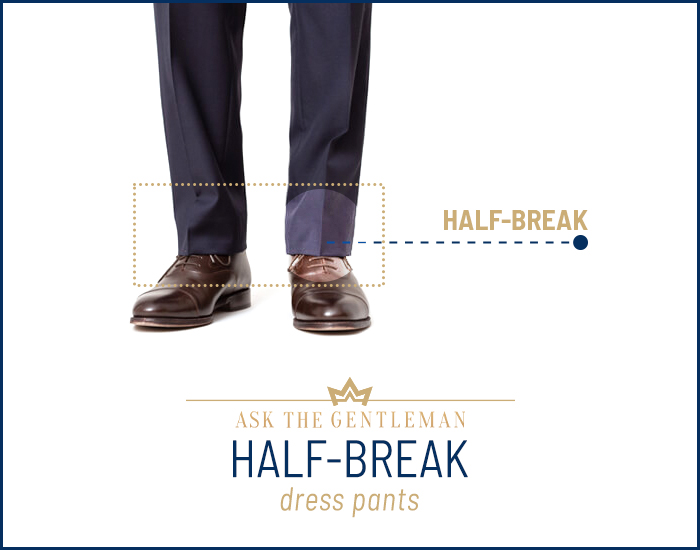
A half break may not be as traditional, but it is still acceptable for the office.
It’s an excellent compromise between classic and modern trouser styles.
Half breaks work equally well with slim fit or straight leg dress pants. It can even work on pants with cuffs.
A successful half break has a hem ½ – ¾” longer than where it should brush the top of your dress shoe.
Quarter Break Pants
You won’t notice much fabric resting on the top of your dress shoe if your pants have a quarter break.
A pair of dress pants with a quarter break is a contemporary style, yet not aggressively so.
It’s a slight break, yet still acceptable for most business offices.
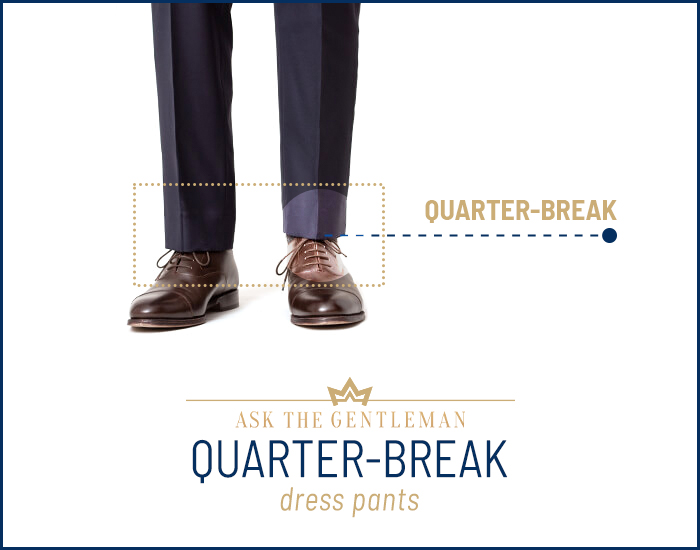
Quarter dress pant breaks are most appropriate on slim fit or tapered suit pants.
However, watch out for your socks because they will be revealed when your pants have less of a break.
Pants with a quarter break are a good style choice for all men.
However, a quarter break is not appropriate with cuffed pants.
No Break Pants
You aren’t required to have a break in your pants.
For this style, your pant hem just barely brushes the top of your dress shoe, almost not even touching it.
No break in your pants leaves your ankle and sock slightly exposed.
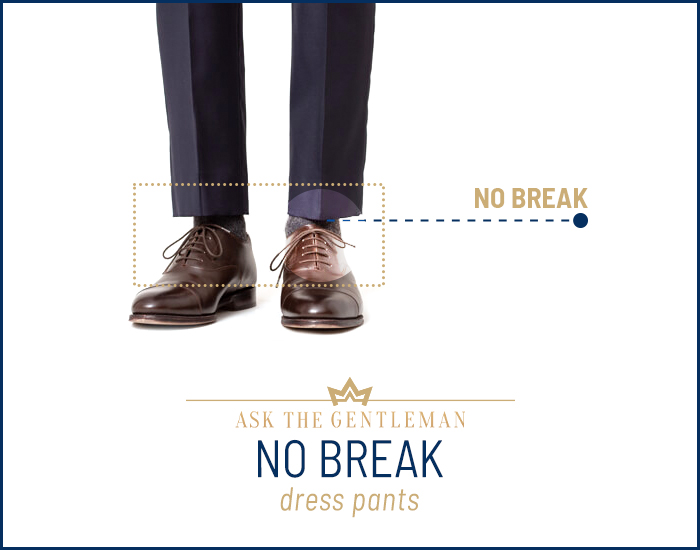
Leaving your suit pants with no break defies tradition and is very trendy these days.
Because of the modernity of this fashion, it’s not a good look in highly conservative offices.
No break pants are the most casual way of wearing pants.
Wide leg openings do not look appropriate with no break.
It looks best with either slim-fit pants or dress pants with dramatic tapering at the ankle.
You’ll notice that leaving your trousers with no break results in a sleek and clean silhouette.
To ensure your pants don’t look too short, your pants should have a slightly longer hem in the back than the front.
The Right Pant Break for You
Your pant break isn’t only about your personal taste.
You still need to pay attention to some clues that will signal how you should style your pant break.
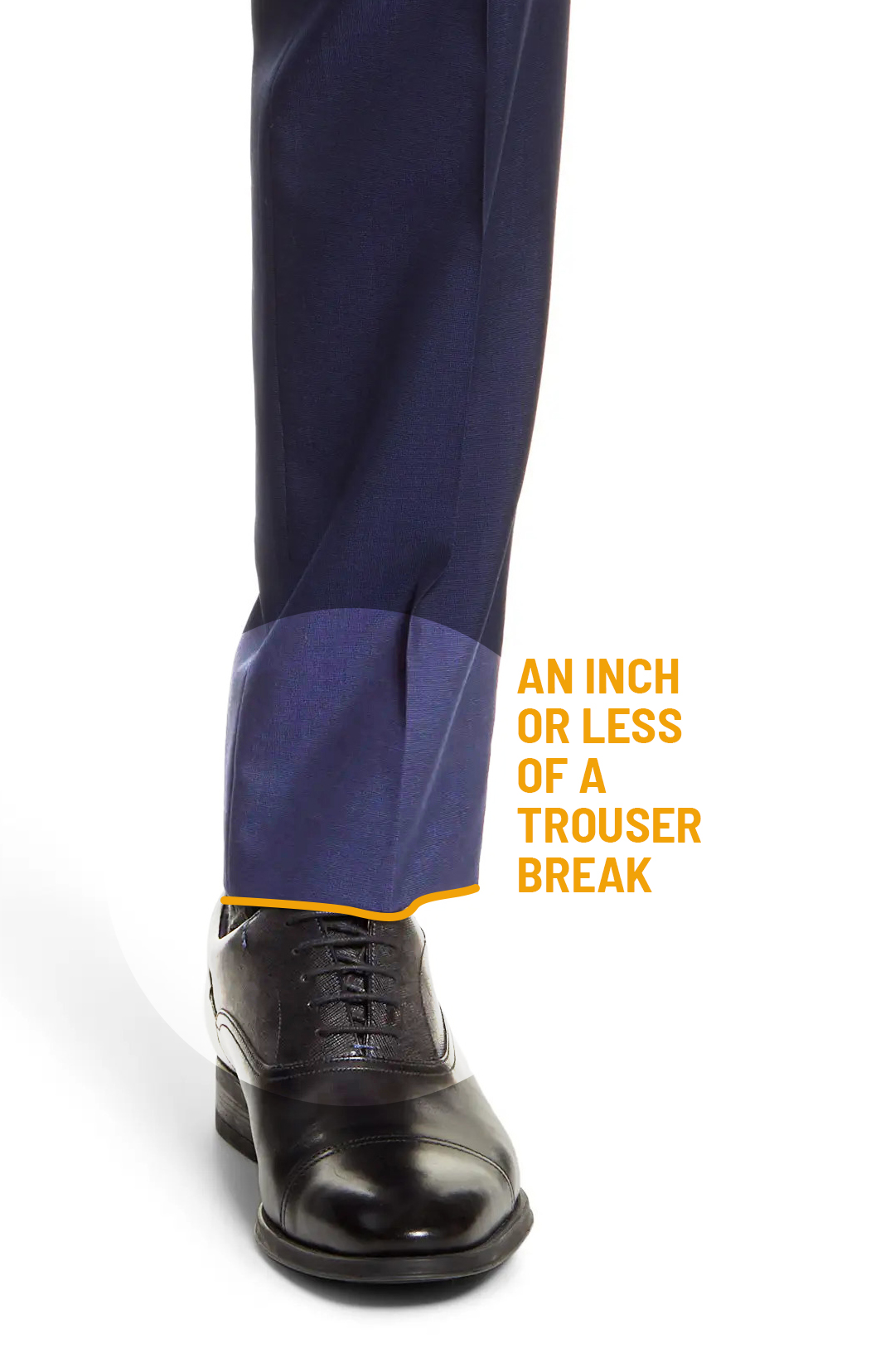
Your height, body type, pants cut, and fabric type should be all factor into your choice.
In general, a more significant break works well for tall or large men.
On the other hand, less of a break can help create the impression of length for shorter men.
How you plan to wear the trousers should not be overlooked, either.
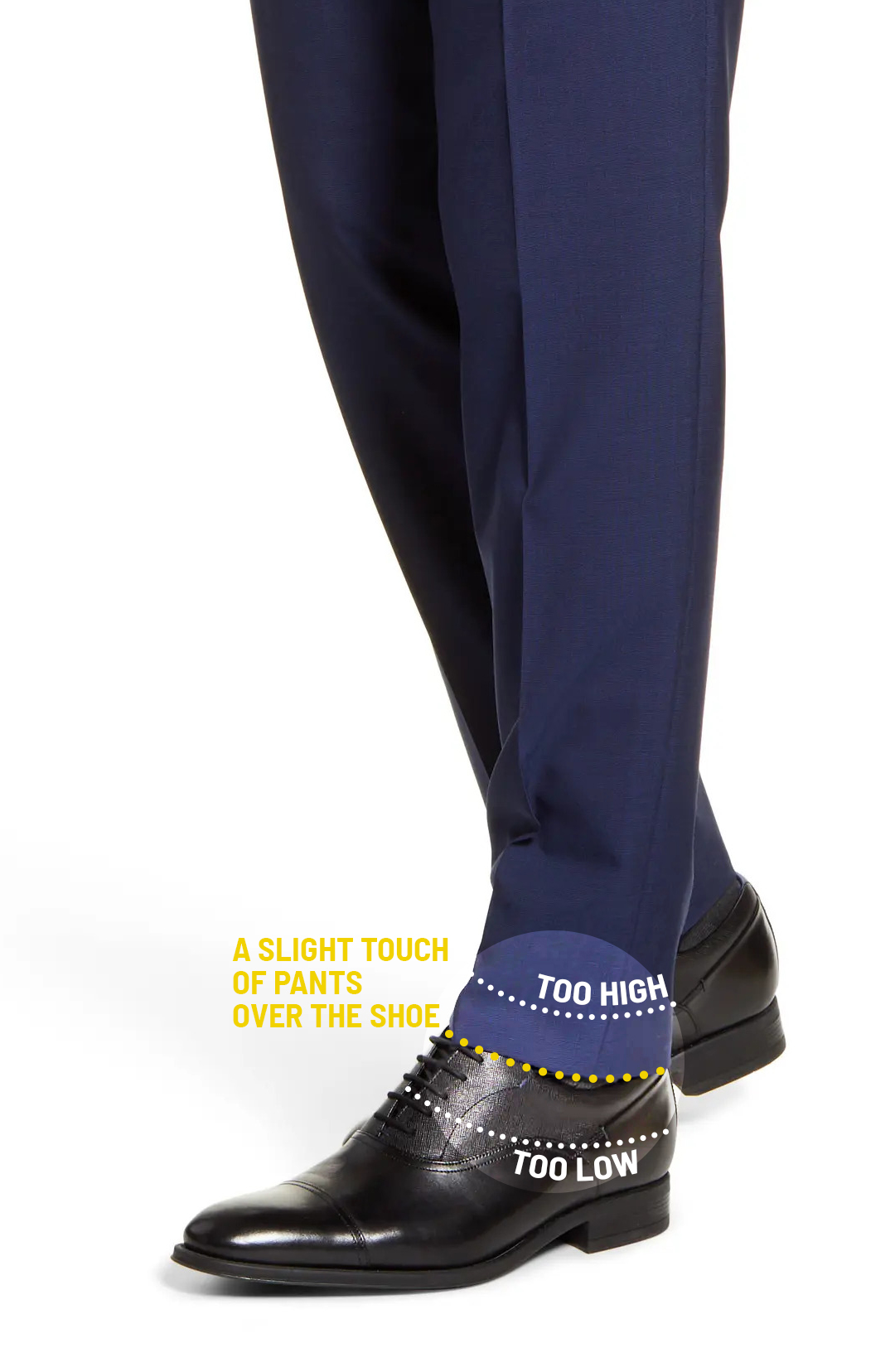
Weigh your choices, considering if you’ll wear them for the office or social events.
Consider the Suit Pants Length
Your trouser inseam measurement deserves attention when debating your trouser break.
The more length on your pant leg you have, the deeper your trouser break will appear.
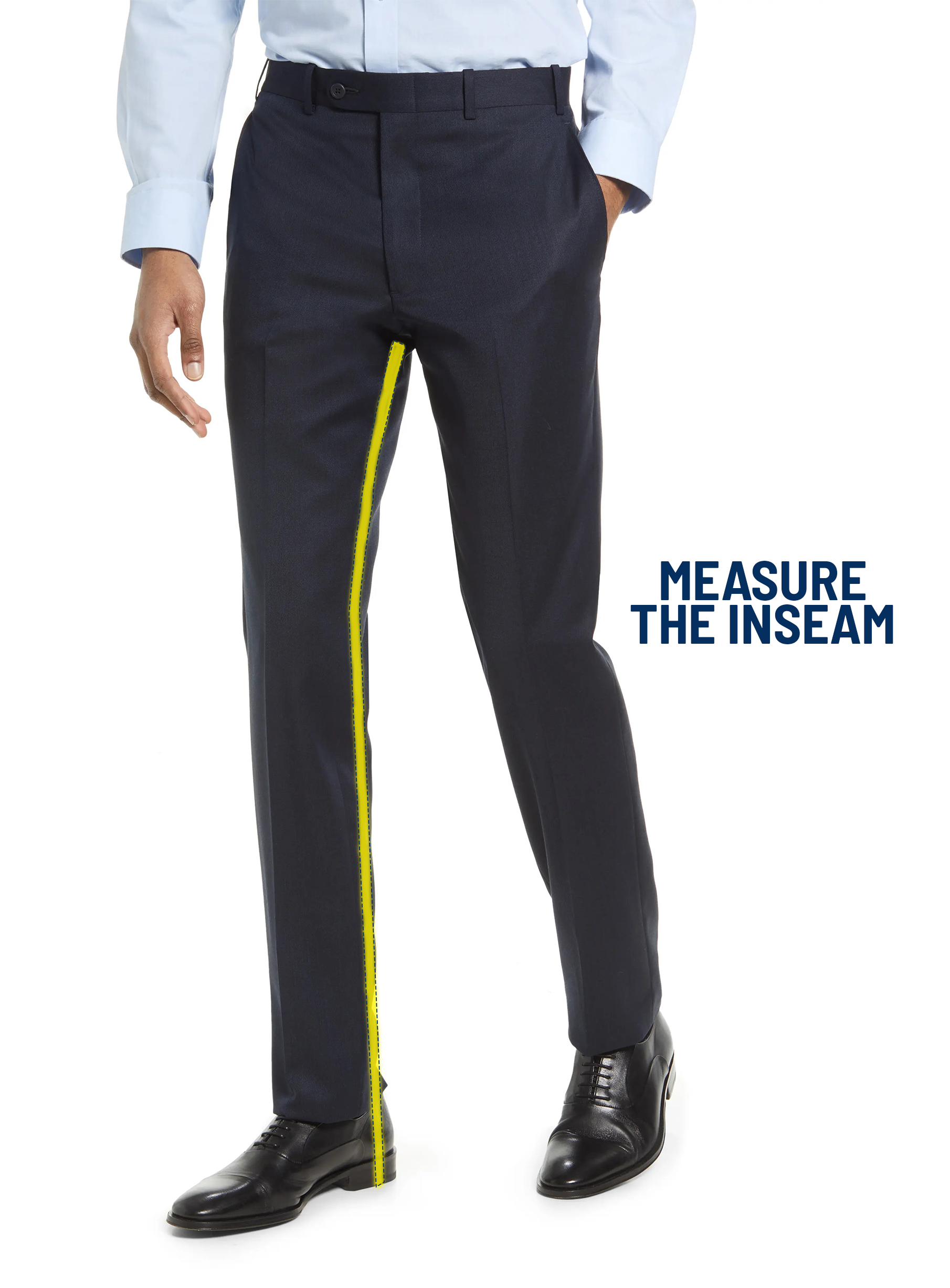
So, be aware that the longer your pants are, you’ll have more material pooling around your ankle.
However, be careful that you don’t hem your pants too short because you could end up with less than you hoped for.
Or worse, you might discover you’ve accidentally ended up with high waters.
Suit Pants Cut vs. The Pant Break
The cut of your pants might not seem to be an important factor for your pant break, but it can have a tremendous impact.
If you have wider pant leg openings at the ankle, your inseam can be longer and have a deeper drape.
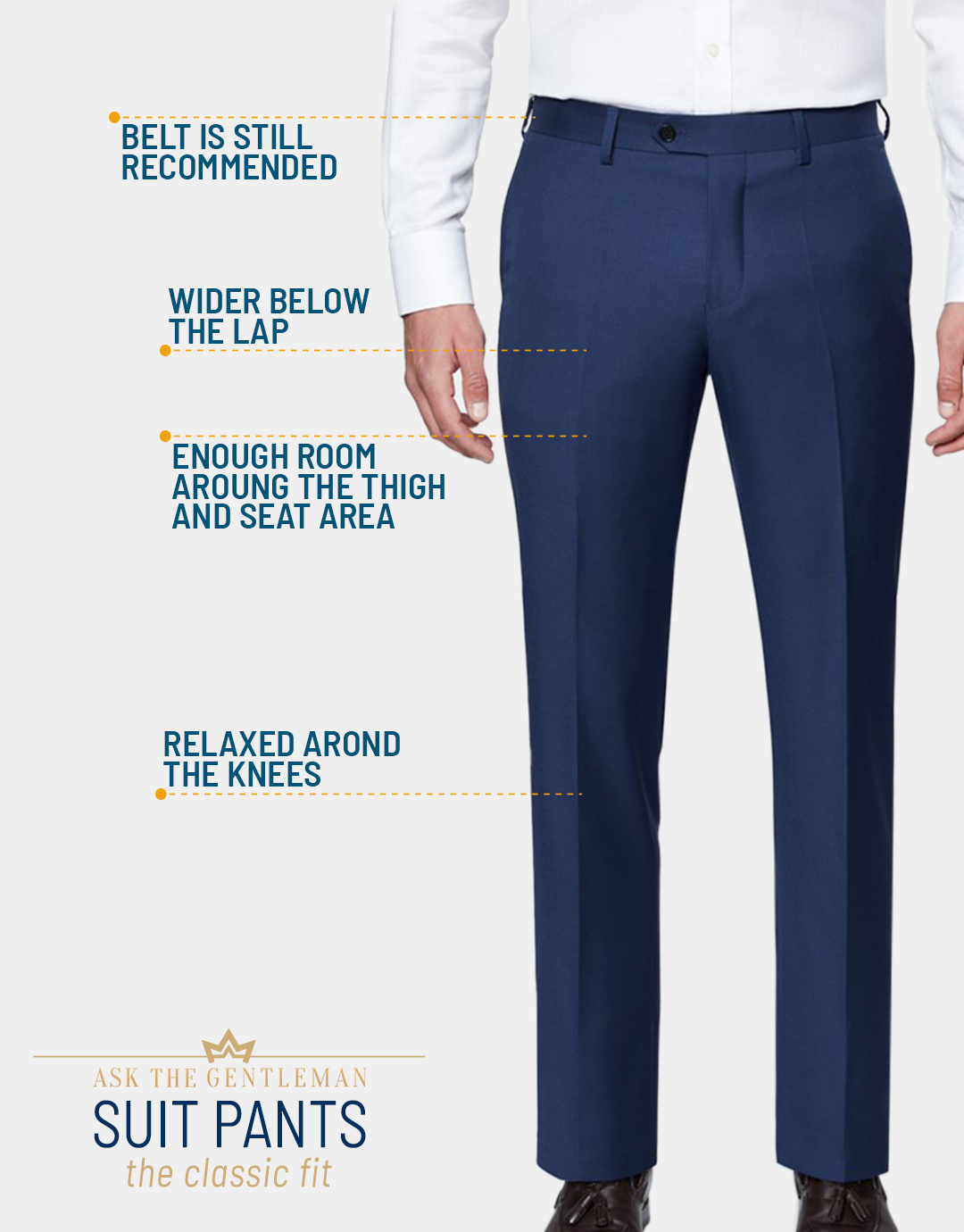
Your pants will drape loosely and easily around your ankle.
On the other hand, slim pant ankles don’t drape smoothly for a pant break.
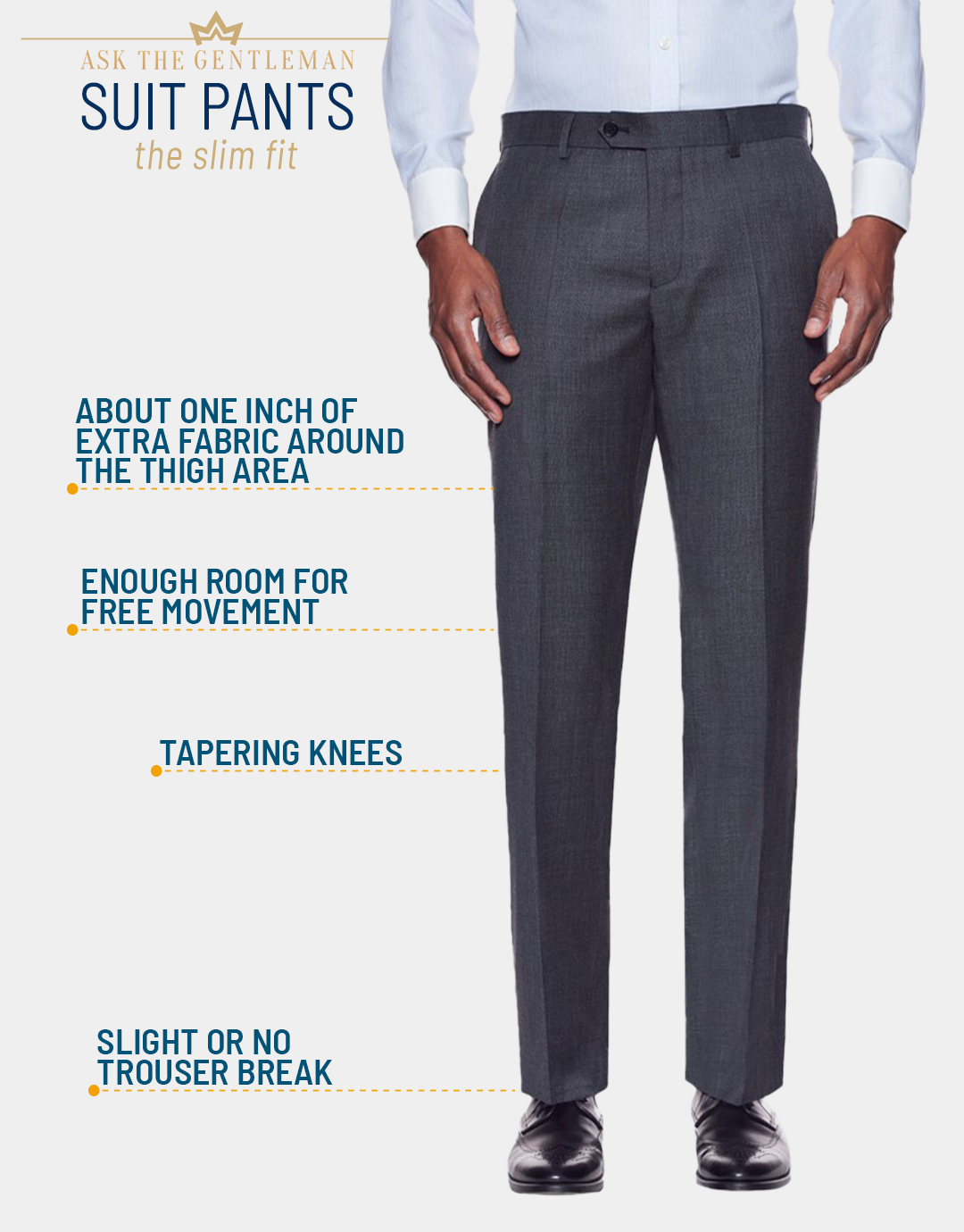
Instead, they only bunch up above your shoe because the trousers don’t have the extra fabric that can spread out some of the space.
Straight vs. Cuffed Pant Break
Suit pants with cuffs are informal.
Cuffs don’t need a break because the inclusion of the cuff is already a style choice.
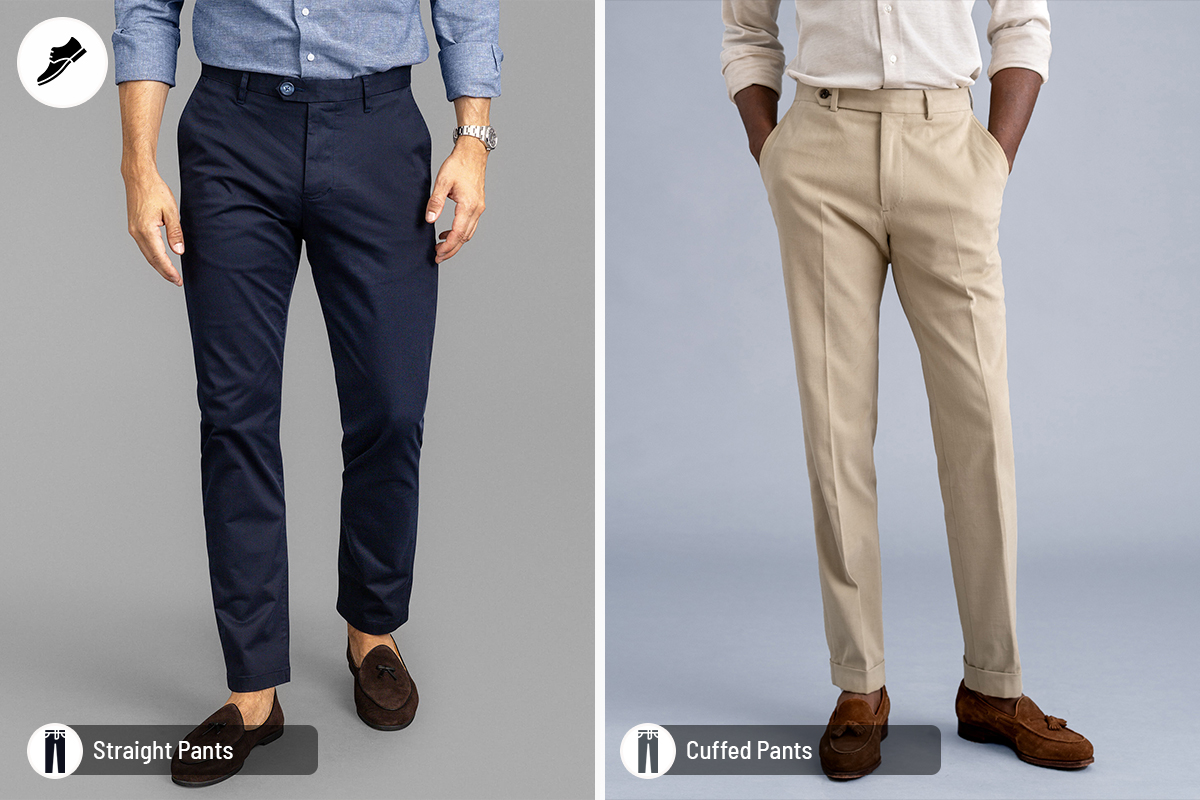
However, some dress pants with cuffs can also have a pant break, but they need to be a specific length.
Cuffed pants can have a slight or half cuff, but a full cuff with a pant break would overload your ankles with a cloth.

